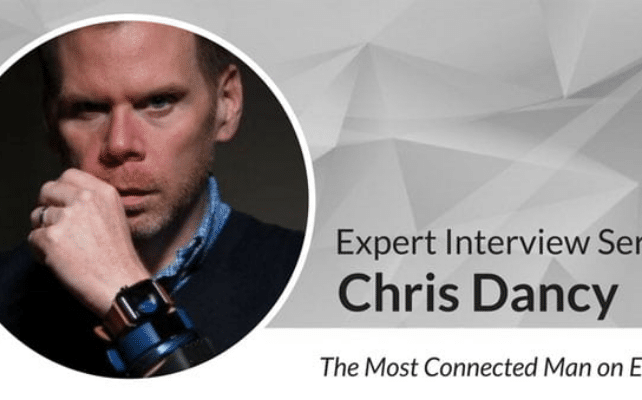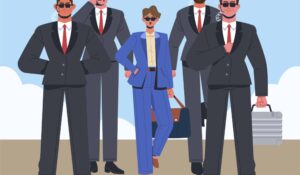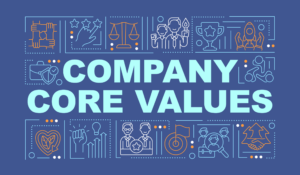For five years, Chris Dancy has been collecting oodles of data about himself.
He wears gadgets including a Fitbit, BodyMedia Fit, Lumoback, Pebble Smartwatch, Apple Watch, Blue HR and more and uses 700 sensors, applications and services to track, analyze and optimize his life.
All this earned him the title of “The Most Connected Man on Earth.”
Dancy has been interviewed by the Wall Street Journal, Wired magazine and Businessweek and regularly delivers keynote addresses and leads workshops on digital health, privacy and technology.
The man knows a thing or two about using technology to improve your health, productivity and quality of life. He has plenty of ideas for how companies can take advantage of data generated by their employees, in-office sensors and more flexible workplace policies to improve efficiency and morale.
Data on Employee Habits Reveals Efficiency Killers
There is plenty of information readily available to employers today that can help them not only better understand their employees, but also help them become more effective employees.
Dancy recommends looking in on employees calendars– not to read specifics– but to see how many meetings they have in a given day.
People with back-to-back meetings all day tend to go home and do work there, which could lead to burnout and low job satisfaction down the road. To help mitigate overloaded schedules, Dancy is a big proponent of walking meetings.
“You can’t talk long when you’re winded,” he says. “People don’t go to as many meetings when they have to walk.”
Another piece of data to look at is the amount of time employees spend in their email inbox, another common efficiency killer.
To get a clearer picture of how employees are using their time, Dancy recommends measuring both the time spent in productivity killers like email, meetings and commuting and also the time not spent doing those things.
Look at the time spent in tools that are associated with productivity. People who are getting the most work done tend to spend time in creation tools– Word, PowerPoint, Excel or the Adobe Creative Suite or in research tools like Wikipedia, YouTube, PDF or file sharing systems.
Employers can also look at things like commute times. Longer commutes contribute not only to inefficiency, but are also a big mood killer, Dancy says. While it is not necessarily a great idea to have everyone work from home (we tried that in the 90s and that did not work well for corporations, Dancy says) he thinks giving employees a more flexible work schedule and providing them with temporary environments where they can get things done, like using a co-working space, helps improve morale.
“Think about when you were in school, your favorite day as a child was going on a field trip,” he says.
There is no shortage of the types of useful information an organization can collect about its employees. One thing he has tried during workshops, but does not necessarily recommend for companies is having employees wear pulse oximeters, which measure people’s heart rates and blood oxygen levels, during meetings. You can see when people are stressed out, and get clues about who in the meeting might need attention for which they are not asking.
Finally, companies should be more thoughtful about how they approach rewarding employees for healthy behaviors. Rather than focusing on how many steps an employee has taken in a day, they should look at more meaningful data.
“If you want to award your employees, measure sleep and award the ones who sleep the best,” Dancy says.
Better Work Environments Do Not Have to Involve Expensive Technology
Creating working environments that are more favorable to productivity and employee happiness does not necessarily have to mean investing in fancy gadgetry. It can start with taking a look– or rather a listen– to noise.
The challenges of a noisy office are the wild variations between noises– hearing white noise at 70 decibels, wearing headphones at 90 decibels, people talking to you at 80 decibels.
“Our minds are bombarded by lots of variations in sound,” Dancy says. “These variations create cognitive confusion and mental exhaustion.”
To normalize volumes, Dancy recommends that companies introduce outside noise, street sounds or nature sounds, which will bring everything up to the same level. Additionally, a tone at the top of the hour can help sync the office. Next, limit the volume on devices by setting a threshold for healthy noise levels. Last, kill the white noise; it creates an environment where talking is frowned upon.
“Hearing noise is a normal part of life,” he says.
One more common workplace headache is office temperature.
“It’s one of those things that’s really difficult,” Dancy says. “No one’s ever happy about it.”
Rather than attempt to make it just the right temperature for each employee, companies could adopt more flexible clothing policies, which would allow employees to address their temperature problems through their wardrobes and accessories.
“People love air,” Dancy says. So having places where people can work outside or near open windows can help, too. Of course, this can be a challenge in many modern office spaces, so installing environmental sensors to monitor things like humidity, temperature, lighting and air quality can offer employees cues for when it might be time to get up and talk a walk outside for some fresh air.
Dancy is also a huge proponent of using ambient lighting to improve work environments.
He recommends LED lighting that is color shifting like bulbs from HUE, which allow employees to announce their mood to the office. For instance, you may have a cube with a light that goes light green for “Looking for help” or a cube that has a red hue for “Intense work happening. Please do not disturb.”
Using lighting in this way would allow a manager to walk out of her office and gauge how everyone was feeling just based on the colors of light employees were using in their individual workspaces.
Companies Need Policies to Address Digital Overload
If there is one thing the World’s Most Connected Man understands, it is digital overload. Despite the fact that he has made the choice to be more wired than your average person, he has still had to find ways to manage the stress that comes with constant connection.
“I had to learn meditation because I was so wired up,” he says.
He believes more companies need to train employees to recognize the signs that being plugged in is making them unhappy and unhealthy.
“The goal for employers is not to try to mitigate digital overload but help other people define it for themselves,” he says.
Just as workplaces have seminars about things like workplace harassment or ergonomics, there should be education about overload. However, Dancy cautions, the solutions for reducing this stress are not one size fits all.
Overload is unique. While one person might hate getting email alerts when he or she gets home from work, another might not have a problem working at all hours. Digital literacy in the office is not the same as recommending a healthy diet, according to Dancy.
“We cannot define that everyone needs three servings of email or two servings of spreadsheets,” he says.
Prohibiting all employees from checking email at home might actually create additional stress for some. You have to help employees figure out what feels natural and healthy for them rather than passing judgment on how they use their devices to do work.
For more of Dancy’s thoughts on digital technology, follow him on Twitter.
And for additional tips for improving employee engagement, get hubEngage’s employee engagement insights e-newsletter.













